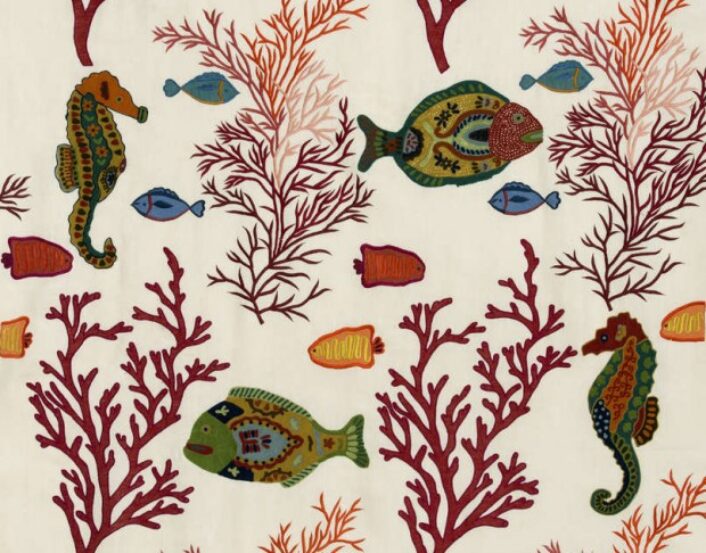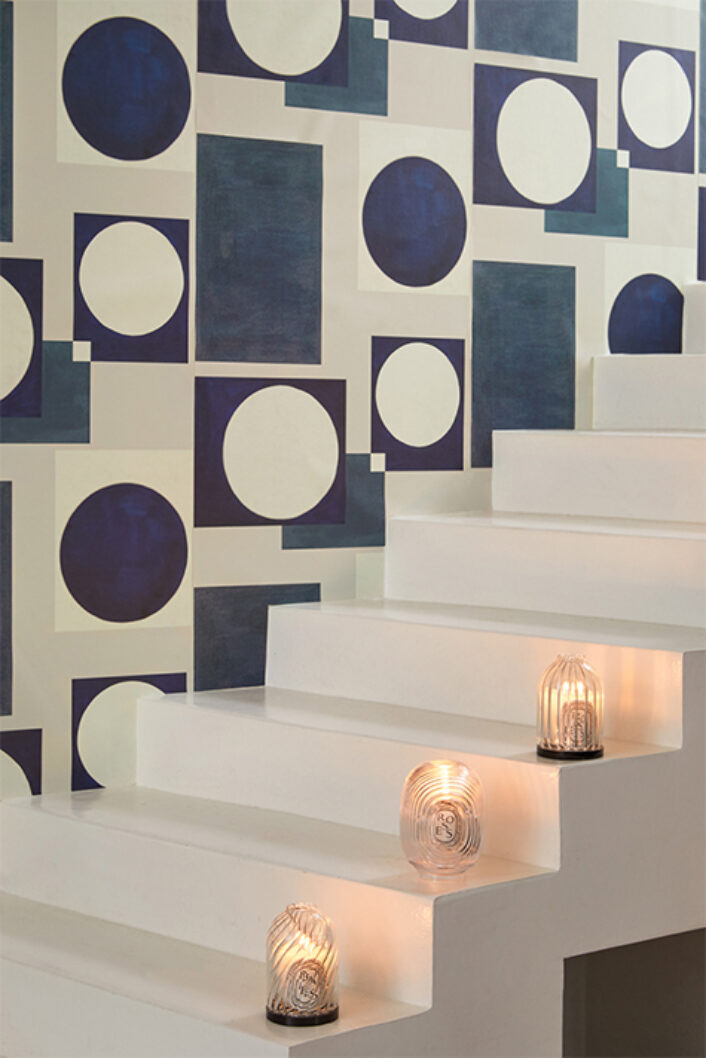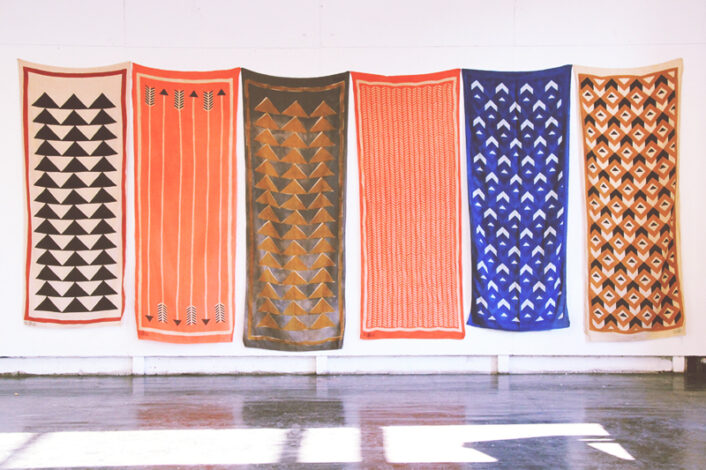Design
KLS textiles

The two outer fabrics are from the Tiger Tiger Collection in Amini Blue and Wineberry; the collection was inspired by a tiger’s coat.The center fabric is the Dekka Strip in Nila Blue. All fabrics were block-printed in Jaipur, India.
Image courtesy of: The English Room
For the past twenty years, Kate Loudoun Shand has worked with patterns and textiles. Such a long time in the industry allowed Kate to gather a complete understanding of the history of textiles and the industry’s ongoing innovations in fabrication. The designer graduated with a masters degree and quickly entered the workforce as a creative director for a product design firm with offices in both London and New York City.
After several years working for the company, Kate developed a line for Anthropologie. This process forced her to realize that she could work for herself… and this is how KLS was born. Courtesy of Cloth & Kind, “I had this corporate career but I really wanted to do my own thing, and that is exactly what KLS is. once you have a good amount of knowledge it’s really good to go off on your own.”
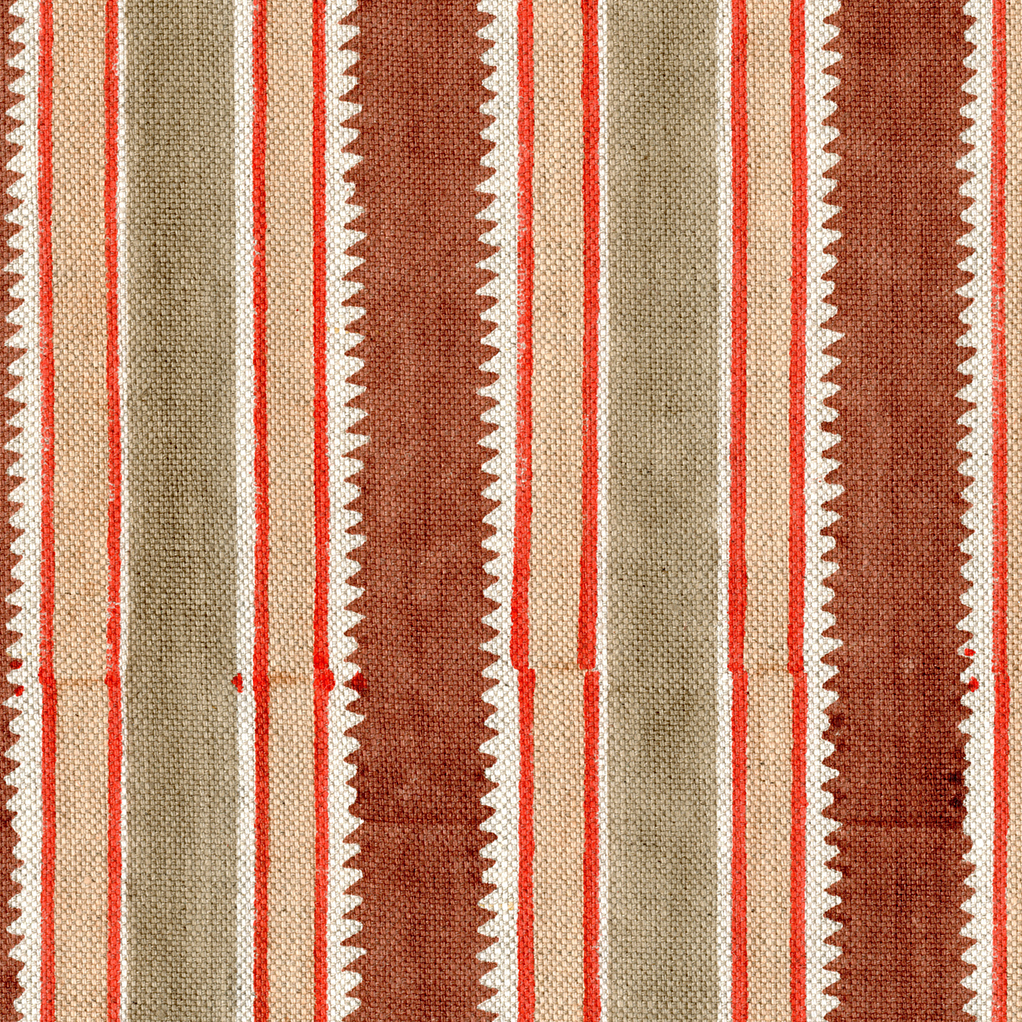
Dhaaree Stripe in Rose. The prints were inspired by Victorian patterns.
Image courtesy of: Kate Loudoun Shand
Kate started KLS along with her husband who takes care of all the showroom correspondence and manufacturing details. Currently, their workshop is in an old glove factory that was converted into studios… brightly colored samples adorn the walls.
Initially, Kate scribbles down her inspiration in a trusty sketchbook. Subject matter sometimes comes from the designer’s imagination and other times, from nature. Revisiting old homes, flea markets, and millineries often brings forth ideas from design history that might be fun to recreate. About how her process beings, she says (courtesy of Kate Loudoun Shand’s site), “Connecting the dots between social and personal histories, the love of the old and the desire to make everything new, throwing opposites together to see what happens.”
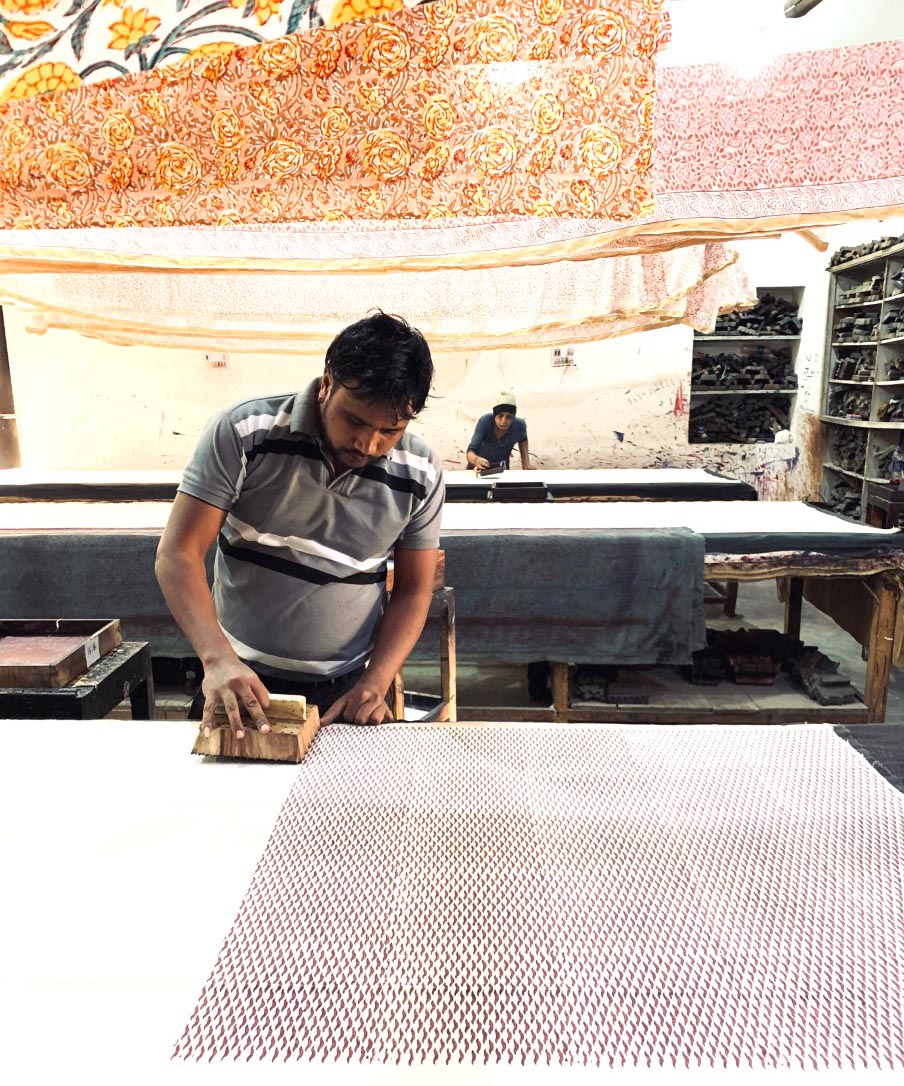
A block-printer at work on a KLS design.
Image courtesy of: Kate Loudoun Shand
In 2021, Kate introduced her first linen, block-print collection. Using the best European flax, the linens were woven-to-order in Mumbai. Coincidently, the artisans they work with in India have become family. The company works with the Chippa community where dye-makers have passed on block-printing techniques from generation to generation. Different generations work alongside one another to complete the dyeing process. Following, the pieces are hung to dry in the elements, further bringing the fabric an individualistic appearance.
KLS’s unique process takes it one step further as the linen is stretched on tables that are stained with the color of thousands of previous prints. This allows the pigment to penetrate more deeply. Proficient printers then handle the blocks with appropriate precision to produce the regular patterning that the design suggests.
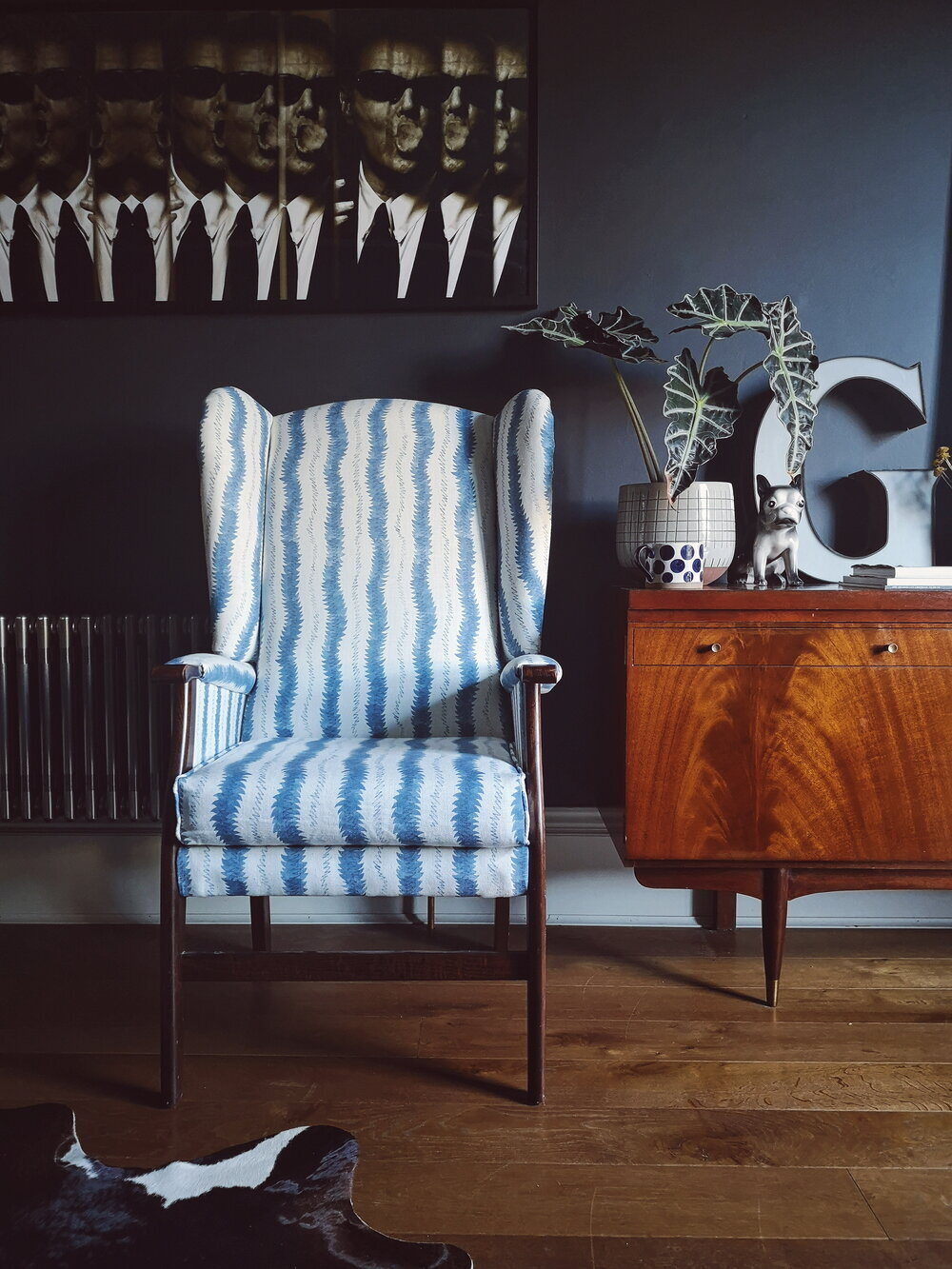
Meanderer in Blue, printed in Pennsylvania.
Inspiration for this design was a Victorian mourning jacket that Kate found at London’s Portobello Market. The collection is available in three colorways: black, blue, and grey.
Image courtesy of: Cloth & Kind
For Kate, the sustainability factor plays a big part in her process. She admits that she hopes to solve the problem of finding patterns that are sustainably designed and made to last. Her textiles are the opposite of what is often found in today’s “throw-away” society. She never adheres to fads or trends, believing that beauty eclipses the span of time.
To produce her pieces, Kate’s journey involves many miles and many people. KLS works with the same illustrators and designers from New York and London that Kate has worked with for years. Her printers and technicians come from Pennsylvania, New Jersey, Milan, and Lancashire, England. The artisans and weavers are in India, and the linen-makers from Belgium provide the best 100% Belgian linen that can be found anywhere.
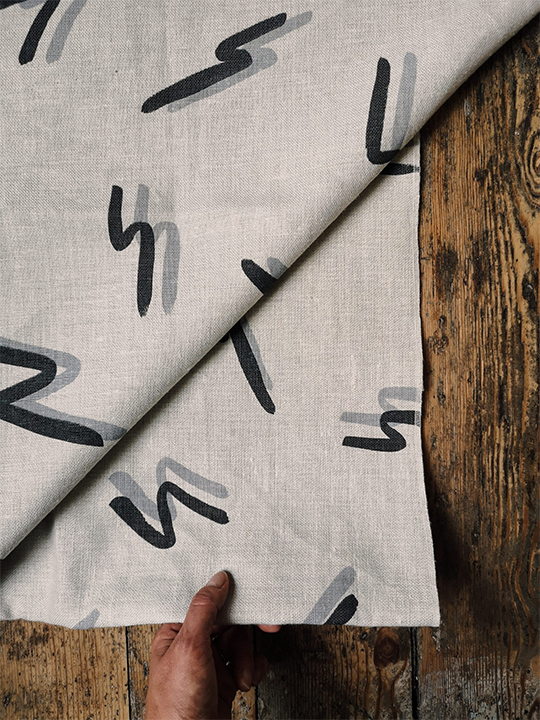
The Dash in Black and Grey, screen-printed in New Jersey.
As the story goes, Kate printed this pattern while on a train to meet an old friend… memories of roller-discoing in the 1980s inspired the design.
Image courtesy of: Kate Loudoun Shand
One collection that garnered inspiration from a very unlikely source was The Dash. The bold prints and colorways were inspired by graphics from the designer’s record collection of 1980s record albums. The mix of a traditional material with a contemporary design certainly sets Kate apart from other textile designers. About the 1980s-insired pattern, Kate said, “I love this idea of a contemporary line on a very grounded linen. The linen that it is printed on is the compete opposite of 80s pop and I really enjoy the play of those two aspects.”
Who would have thought? Well, we are glad that Kate did!
